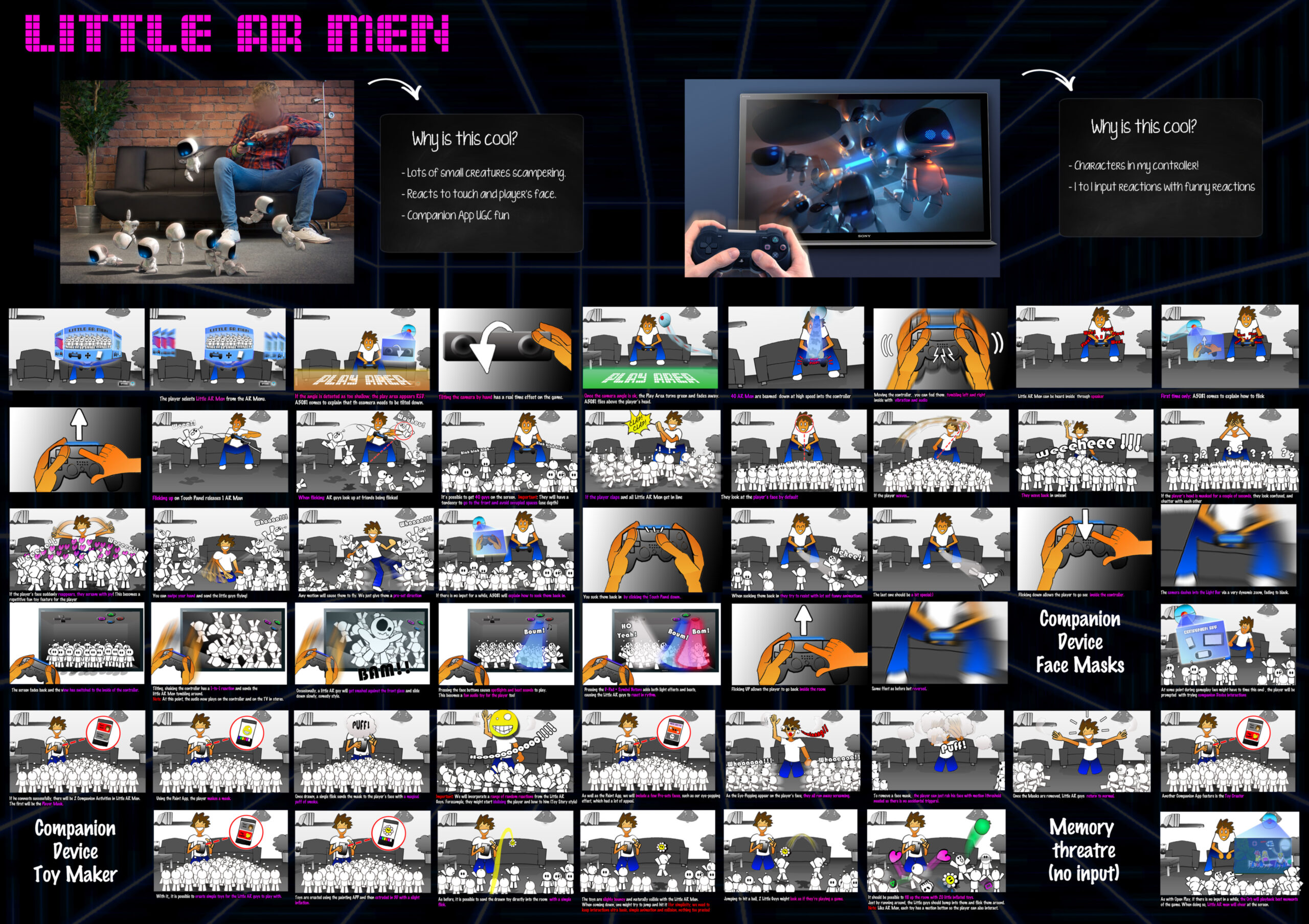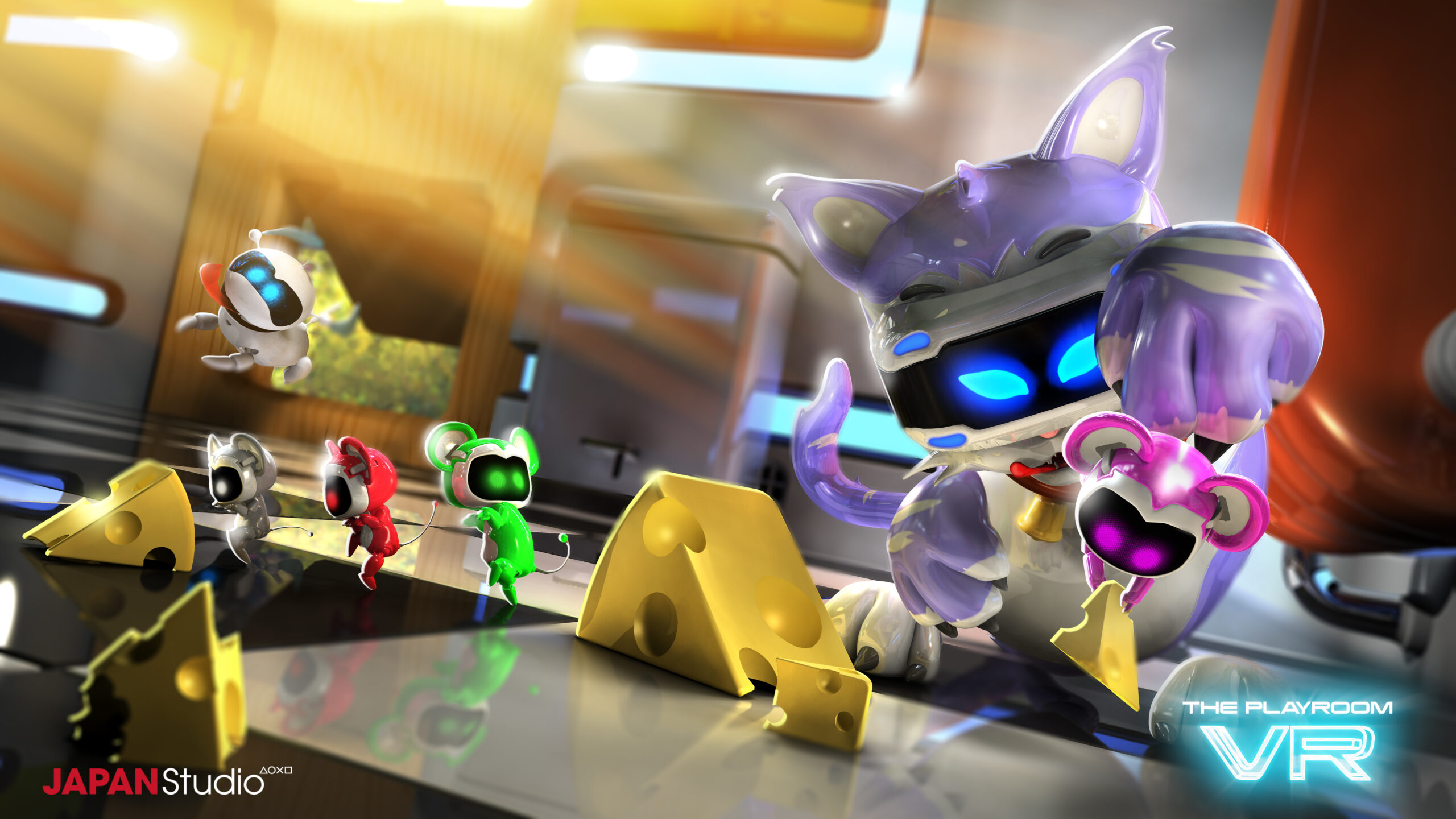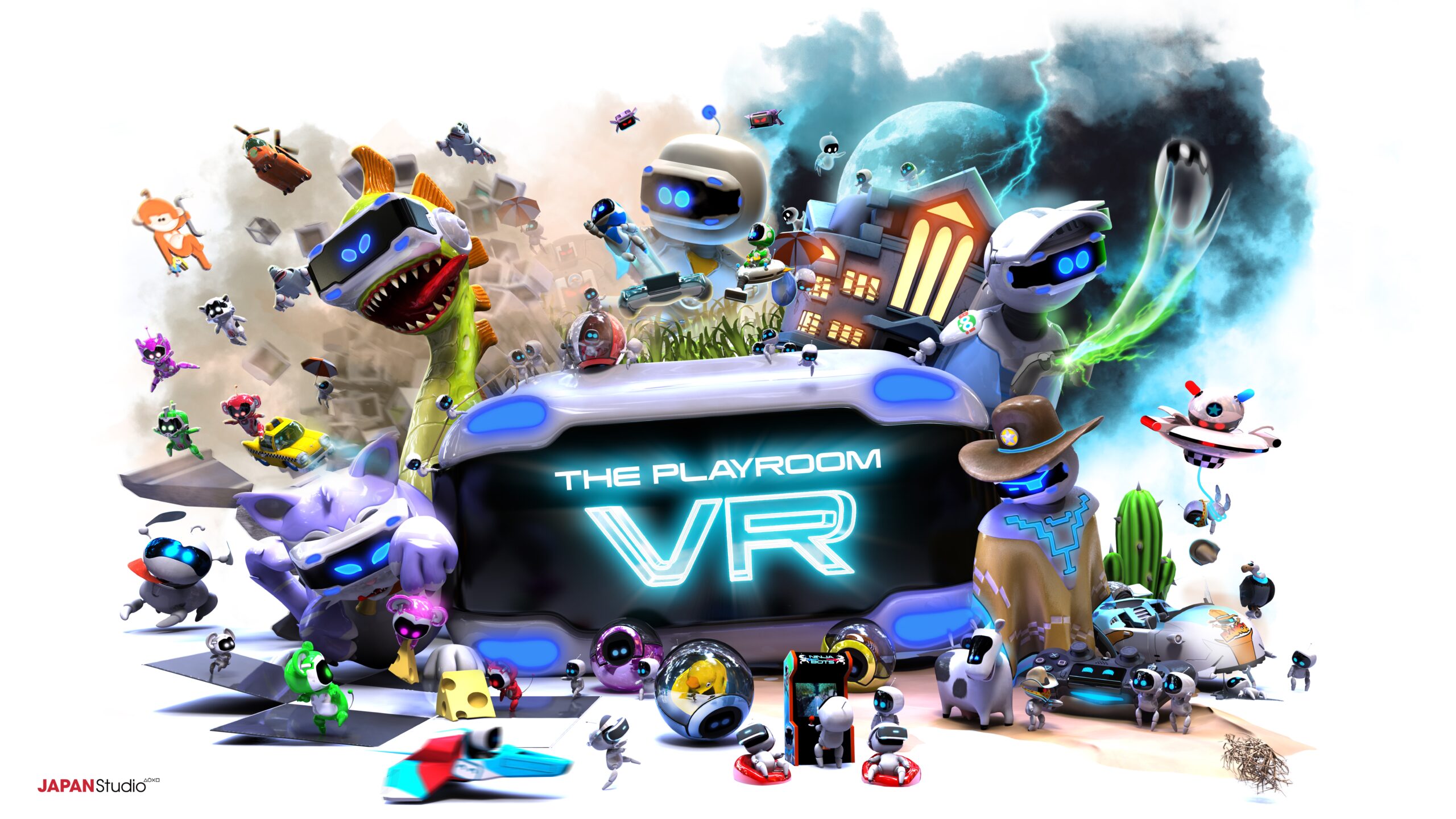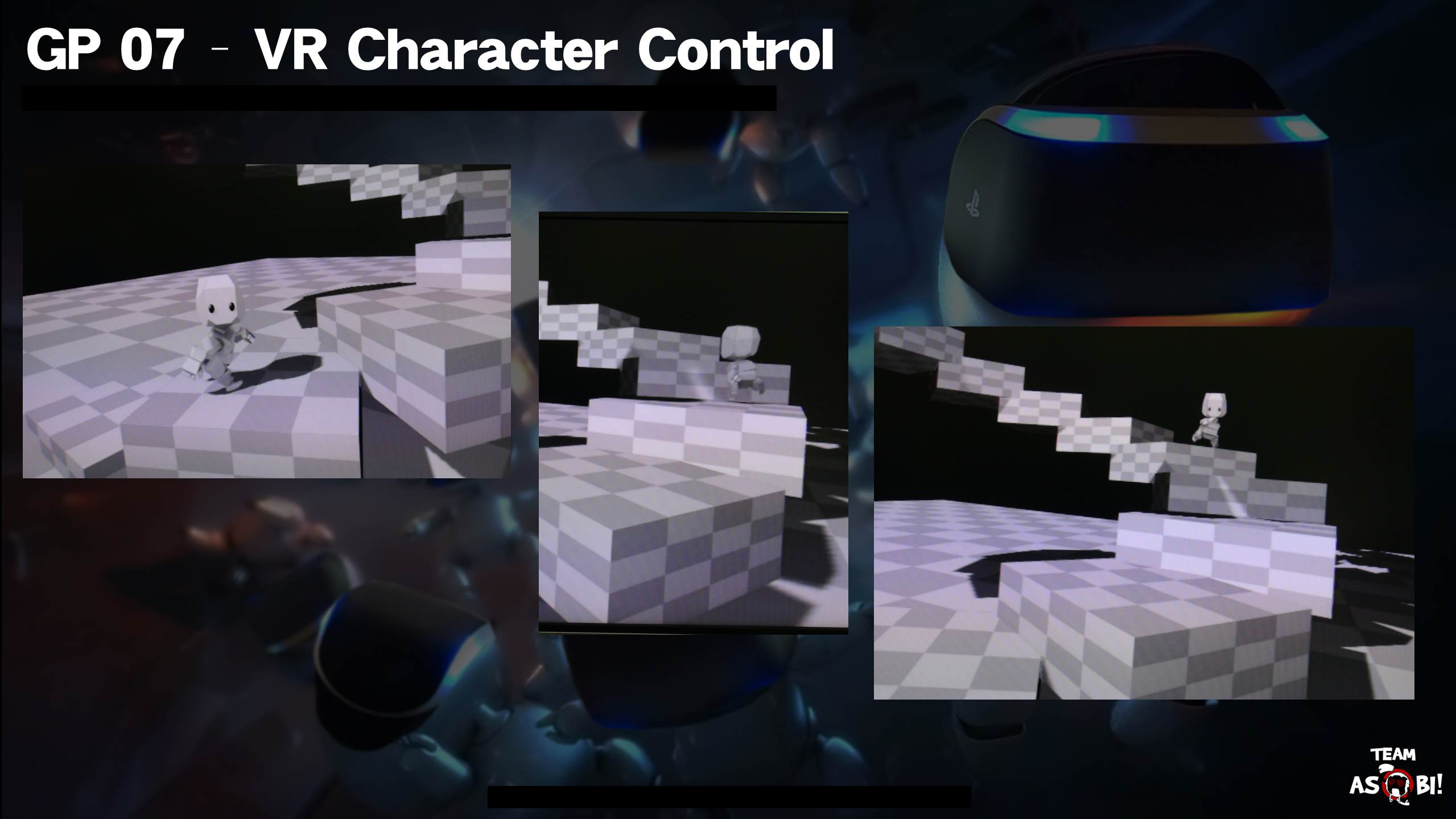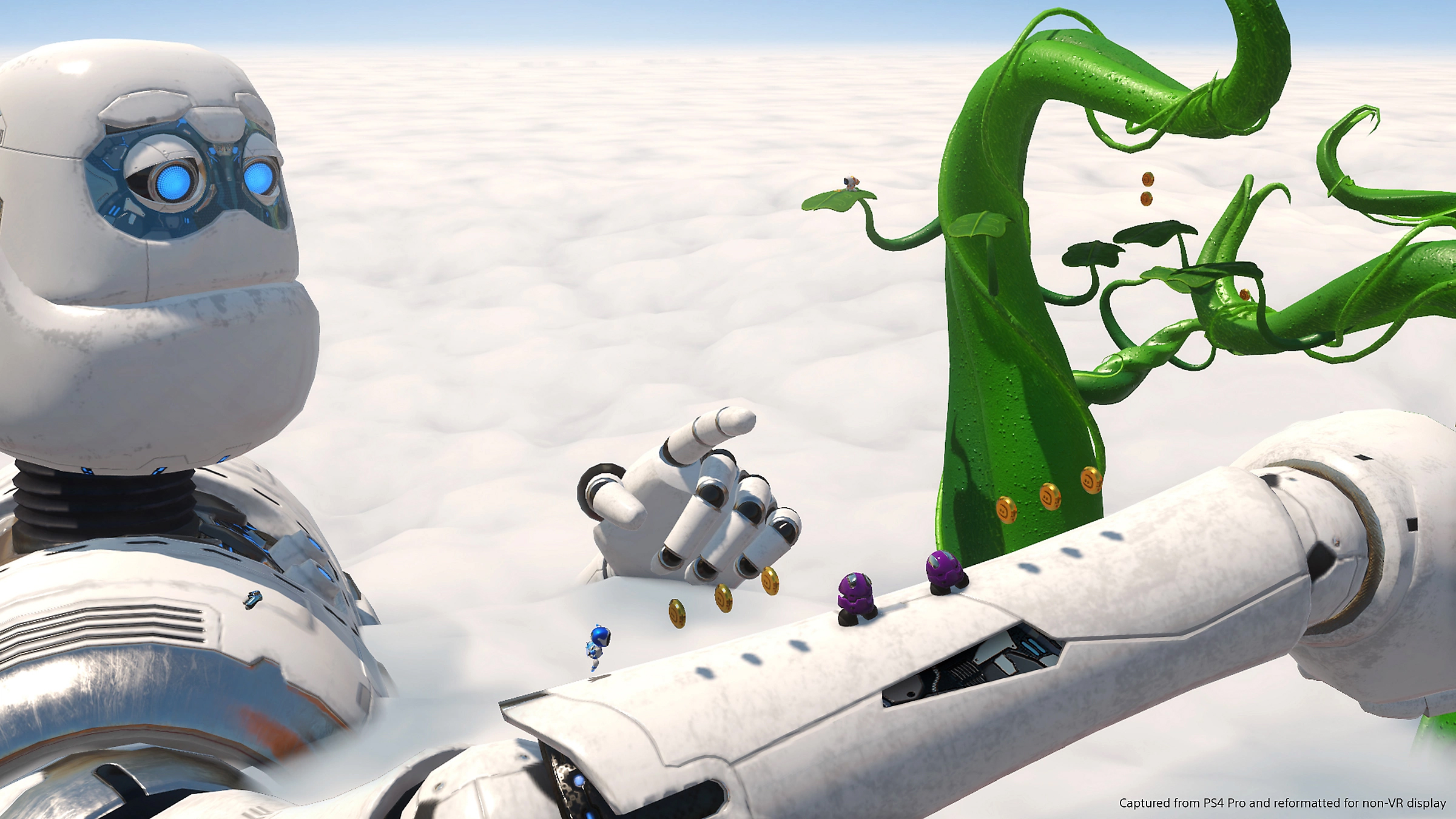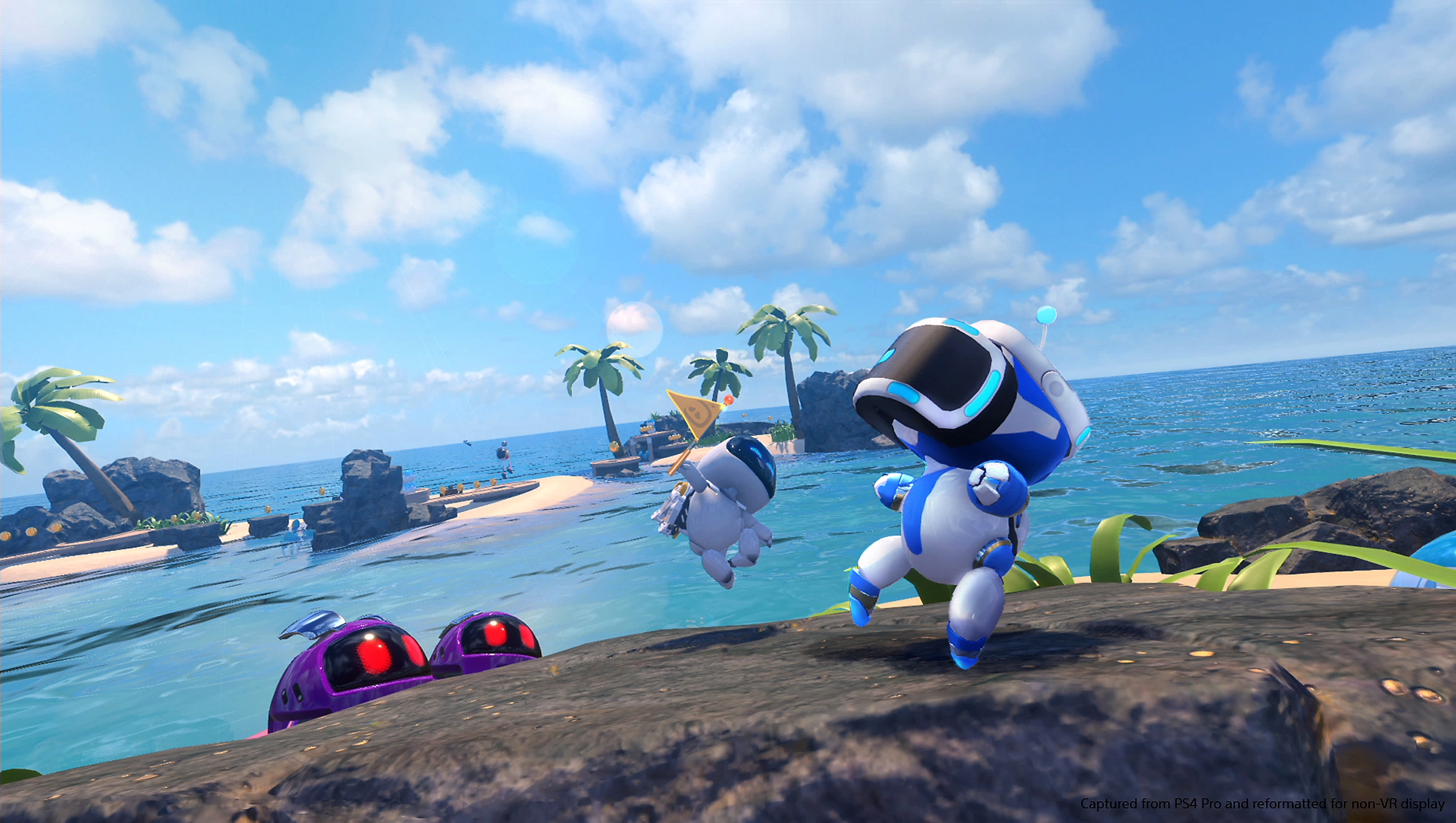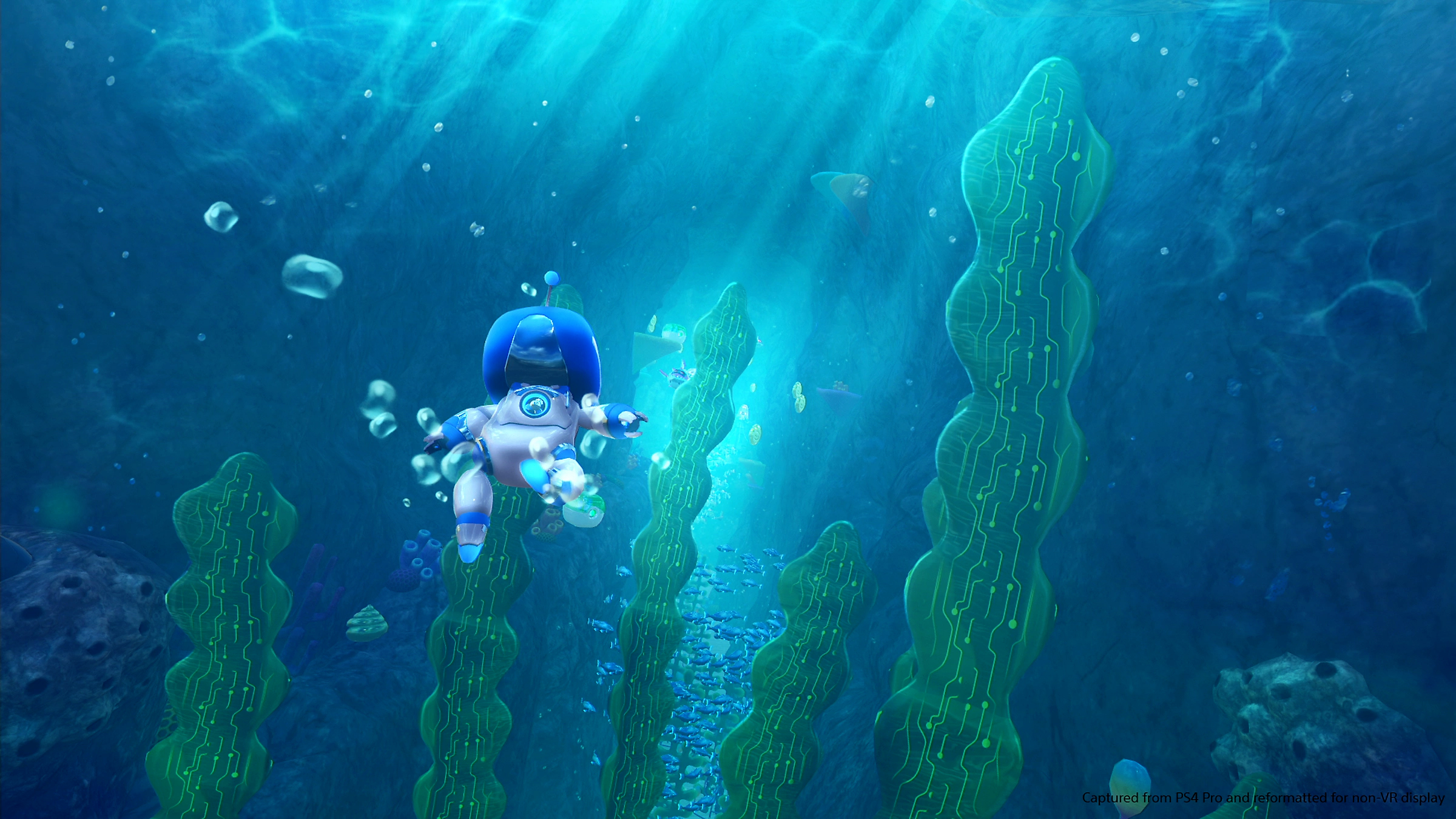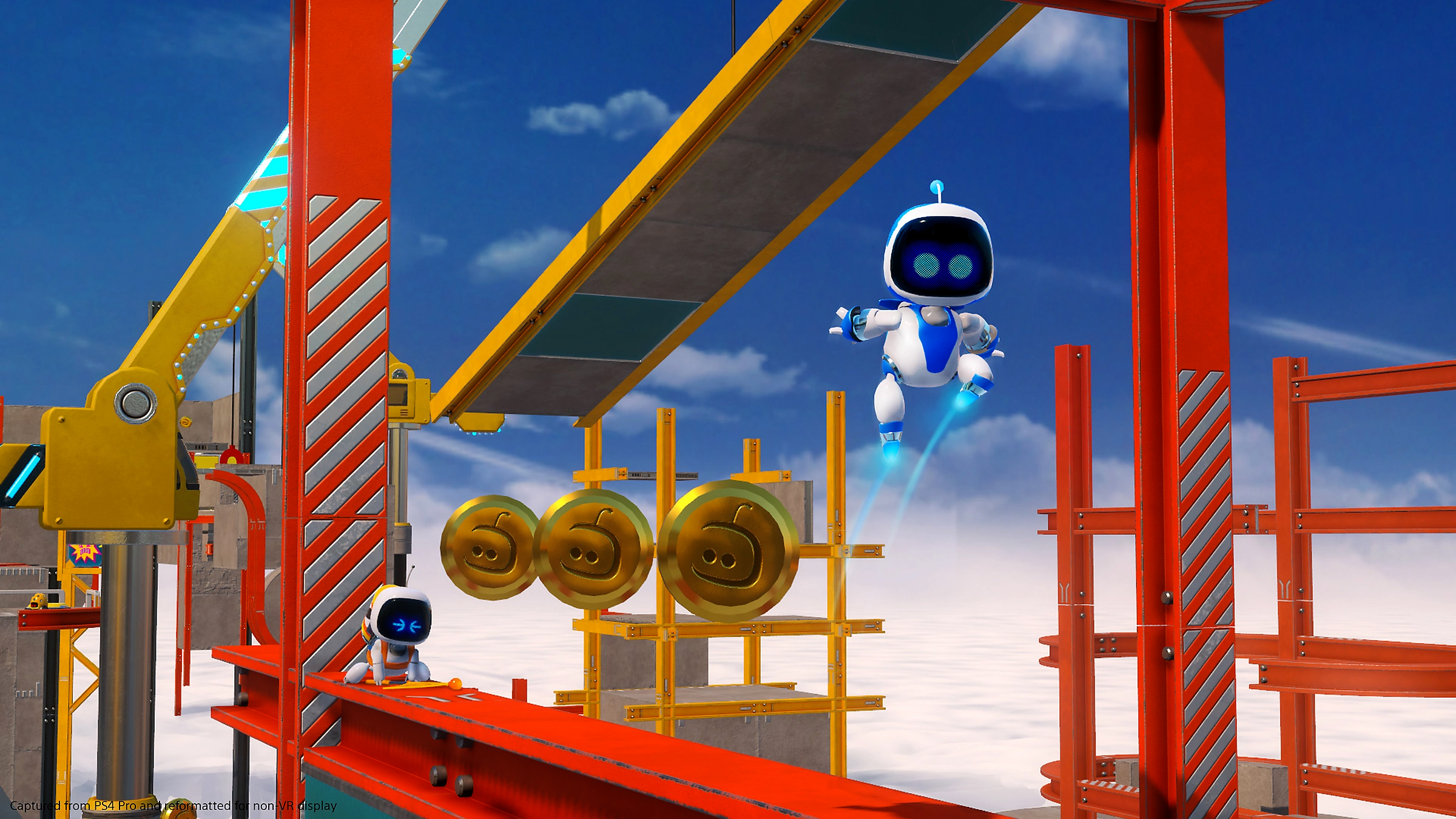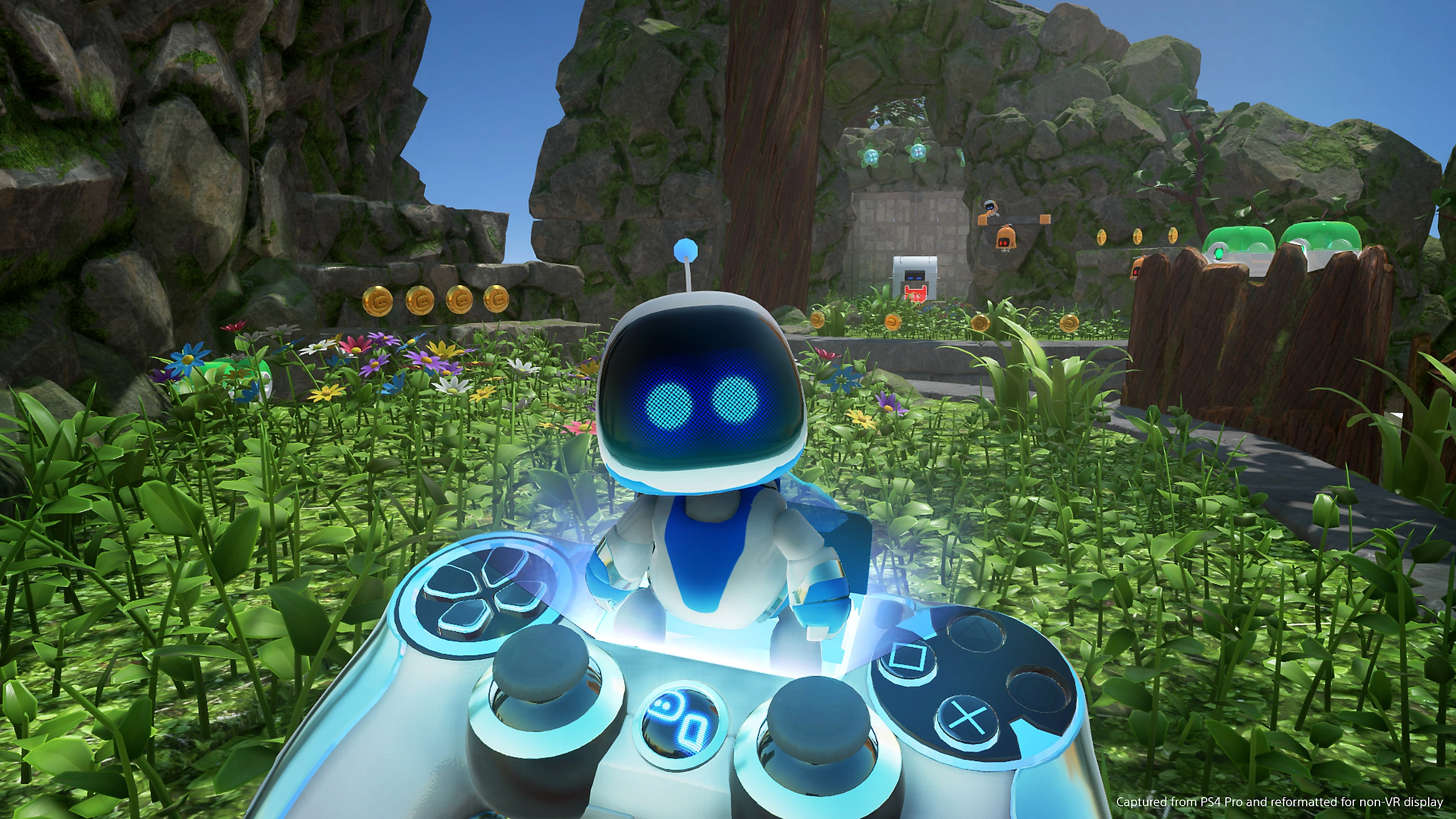The post Towerborne Developer Diary: Fine-Tuning Fun appeared first on Xbox Wire.
Author: Game Infliction
Early Deadlock Footage Reveals Gameplay Mockup Using Assets From Half-Life, Left 4 Dead, and More
Early test footage of what seems to be Valve’s recently announced multiplayer online battle arena (MOBA) shooter, Deadlock, has surfaced online.
The footage was shared by X/Twitter user, content creator, and leaker @gabefollower, who says it comes from a Valve developer known as Yoshi. It’s a barebones version of the Deadlock we now know, with texture-less buildings, concrete floors, and triangle pine trees. As Gabe Follower points out, this early version also utilizes assets from a few other Valve titles. Half-Life Antlions, for example, can be seen filling the minion role, while the game also uses assets from titles like Left 4 Dead and Dota.
It’s far from impressive but still an interesting look at a game that we still know so little about. It’s unclear when exactly the footage was captured, but you can see what was shared below.
Valve dev “Yoshi” shared early footage of gameplay prototype for Deadlock. Placeholder assets from Left 4 Dead, Dota and Half-Life… pic.twitter.com/fmKfl7d1KA
— Gabe Follower (@gabefollower) August 26, 2024
Valve properly revealed Deadlock as its first new IP in years just last week. It’s a third-person, 6v6 shooter that’s still very much in early development, and the lead-up to its announcement has been anything but ordinary. The Half-Life and Portal developer has allowed a select group of players to play the game throughout the last few weeks, asking those who participate to refrain from sharing any content or opinions from their experience. It’s led to confusion among those not on the shortlist, as playtesters have still managed to sneak some gameplay footage onto social media. Meanwhile, PC statistic website SteamDB revealed a growing number of players flocking to Deadlock in secret through August, with players starting to join earlier this month and peaking at 44,512 users days before Valve pulled back the curtain.
Deadlock platforms have not yet been announced, but it is currently playable on PC for playtesters. No release date has been shared yet. While Valve keeps its head down to continue development, you can read about a few other early leaks that teased some of what would eventually be revealed as Deadlock.
Michael Cripe is a freelance contributor with IGN. He started writing in the industry in 2017 and is best known for his work at outlets such as The Pitch, The Escapist, OnlySP, and Gameranx.
Be sure to give him a follow on Twitter @MikeCripe.
How to Watch the 2024 D&D Direct
Gather ’round, Dungeons & Dragons fans! It’s nearly time for this year’s D&D Direct, the annual event that showcases what’s on the horizon for the legendary tabletop RPG. Incredibly, it’s been 50 years since the creation of D&D, and it’s still the king of TTRPGs. This year marks the third annual D&D Direct, and there’s sure to be some exciting and unexpected announcements.
We have all the details you need to know going into the show, including when it goes live, where you can stream it, and what you can expect to see.
D&D Direct Date, Time, and Where to Watch
The show will air on Tuesday, August 27, starting at 9 am PT / 12 pm ET / 5 pm BST. For our friends in Australia, that’s Wednesday, August 28 at 2 am AEST. The show will be about 15–20 minutes long and will be livestreamed across IGN’s channels. You can watch it at any of these places:
IGN.com (our homepage)
If you’re unable to watch live or want to see it again, the full show will stay on IGN’s YouTube channel after it finishes, just like last year’s D&D Direct.
What to Expect at D&D Direct
The show will be all about what’s coming for D&D. The game studio team will be on hand to talk about the 2024 Player’s Handbook that’s coming out in September. It’ll be the final sneak peek before release, and you’ll get to see some of the artwork featured throughout the book. Plus, you’ll get a glimpse into what’s in store for the 2024 versions of the Dungeon Master’s Guide, Monster Manual, and more.
The Project Sigil dev team will also join to share the latest information about the project. If you’re not familiar with Project Sigil, it’s a 3D sandbox that can bring your D&D campaign to life in a new way. You can create new adventures and share them with friends to play as a group. If you’re interested, you can sign up for the closed beta that will open this fall.
On top of all that, there’s bound to be some surprises even we can’t see coming. You’ll just have to tune in to the livestream to see what they are.
Soapbox: The Trauma Of Giygas & Growing Up In EarthBound
EarthBound turns “adults into kids, and kids into adults”.
Soapbox features enable our individual writers and contributors to voice their opinions on hot topics and random stuff they’ve been chewing over. Today, Nile celebrates the innocence of youth, the pain of growing up, and the magic of a cult classic SNES RPG, which celebrates its 30th anniversary on 27th August 2024…
There’s arguably no more praiseworthy label than calling a piece of media “timeless”, a product so true to its singular vision that its sights, sounds, and ethos succeed in emotionally impacting audiences across generations. Three decades on from its release, EarthBound (Mother 2 in Japan) is, for many, a game that indisputably earns the label.
Read the full article on nintendolife.com
The evolution of Astro Bot’s adorable character design
From the moment he popped out of our transformed DualShock DualShock 4 wireless controllers in Playroom VR, it was clear that Astro Bot was going to charm hearts across the galaxy. Eight years later, this amazing character is truly ready to step into the spotlight via his titular PS5 adventure – Astro Bot. So we sat down with Team Asobi’s studio director Nicolas Doucet to get into the nuts and bolts of the origins and evolution of this iconic PlayStation mascot-in-the-making.
The Playroom
Birthing baby robots
The very first conception of Astro Bot emerged from Team Asobi’s desire to experiment with the DualShock 4 controller connection with the PS4 camera, crafting a demo provisionally titled Little AR (Augmented Reality) Men. The main characters were initially tiny robots that you could interact with on your living room floor.
“That was really the starting point,” says Doucet. “At the time we didn’t have any art, so we made prototypes out of primitive shapes. The characters were just robots made up of cylinders with little eyes. Eventually we renamed them to AR Bots.
“We worked with artists to bring these characters to life, but we only had five months to implement the demo into The Playroom. So to make them sci-fi looking within such a short period of time, we gave them a Sony robotics style. But it was also important that they were endearing, so we gave them big cute eyes and made them waddle like toddlers, so they kinda became baby robots.”




The Playroom VR
From AR Bots to Astro Bot
As the AR Bots became customized as part of The Playroom’s evolution into The Playroom VR, Astro Bot himself emerged needing a more central character to control for a VR platformer prototype, which became the Robots Rescue mini-game.
“We internally called him Captain Astro,” explains Doucet. “We added a PlayStation blue livery and more parts to have him stand out from the environment, gave him the ability to hover and modified his hands to grab things.







Astro Bot Rescue Mission
“He also had to feel tangible for VR. We looked at him as if he was a real-life robotics product – it’s a character you can take apart and understand how his joints come together.”
It wasn’t until 2018’s solo PS VR platformer, Astro Bot Rescue Mission, that Astro officially claimed his name – and with it came with the help of animation and art talent from other development teams, including Gravity Rush and The Last Guardian.
A cache of the minutiae
Making sure Astro was primed for his full solo escapade in Astro Bot Rescue Mission meant tweaking his design, both from a visual and gameplay perspective. Already gifted with classic platformer design considerations – a low center of gravity and a compact frame – Astro benefited from several little details, some made even more distinctive in Astro Bot:
Eyes
Astro’s blue LED eyes are key to his facial expressions, changing shape to convey a variety of emotions – but they’re also fundamental to the VIP Bots in the game. More on that point, later…
Jetpack
“In the original design whenever Astro hovered, two little wings came out of his back for him to glide,” says Doucet. “You don’t really notice them, but we wanted to create a rationale behind the function.”
Chrome dome
Astro Bot’s star shines in more ways than one, with the plate on his head subtly showing off the dazzling power afforded by PS5. From jungles to oceans, all the game’s environments are now fully reflected on the back of Astro’s silver head plating during his travels.
Robo voice
We might think Astro’s cute, high-pitched voice was a natural decision, but lots of thought went into what he can say, to the point that he’s secretly a bit of a polyglot. “Astro fundamentally does not talk but his sounds do mix English and Japanese, but also universal words and onomatopoeia, masked into robotic sounds,” says Doucet. “He’s being played by kids all over the world, so we also had to think about sonority, sounds and syllables that work for as many languages as possible.”
Expanding Astro’s world
It’s things like Astro’s reflective head plate that symbolizes his growth over the years, now unlocked for PS5. Being in 4K has meant more detail and higher fidelity across the board with a compatible 4K TV or display, making Astro and his companions pop, something that extends even to the game’s flora and fauna.
“There’s a lot of wildlife – about 70 new animals in this game,” says Doucet. “From frogs and small insects, to polar bears and elephants, and they all follow the design language of the bots with LED eyes. Even power-ups like Barkster the bulldog booster have the same traits. So the idea of blue LEDs for friends and red LEDs for enemies has become something of a trademark we’ve built on.”
‘Steeling’ some beloved PlayStation characters
And then there are the VIP and Cameo Bots – in-game versions of popular PlayStation-related characters – that had players buzzing with delight at their reveal. The franchise isn’t a stranger to cameos, but Astro Bot takes it even further, with a staggering amount of consideration given to integrating its robotic tributes to Kratos, Aloy, Nathan Drake, and many others.
“They had to be a cool sci-fi design but also have things like fabrics or furry boots, so we sometimes felt we might be going against the original intent of the character,” explains Doucet. “So we substituted more organic materials, like hair, with materials such as vinyl.
“But with all of these characters, the eyes are paramount. Sometimes LED eyes just didn’t work on certain characters because the original design relies so much on the pupils being a certain size or color for instance . So for more cartoony VIPs like Crash Bandicoot or from Ape Escape, the Bots are wearing a mask to help bridge that problem!”
Excited for Astro’s first PS5 adventure? You’ve not got long to wait – space, speeders, and surprises will be yours to enjoy as Astro Bot gears up for its September 6 launch.
Will Ospreay’s AEW All In Entrance Was Infused With Assassin’s Creed Shadows And Narrated by Ezio
It’s no secret that today’s wrestlers, whether from AEW or WWE, are massive gamers. Nevertheless, that doesn’t stop the phenomenon of witnessing superstars like AEW’s Will Ospreay displaying his affinity for Assassin’s Creed with a thematic entrance at yesterday’s All In pay-per-view any less remarkable.
August 25 was AEW’s All In pay-per-view in Wembley Stadium, one of the biggest pay-per-view events in wrestling. One of the matches at the stacked four-hour event was Ospreay competing against Maxwell Jacob Friedman for the newly minted American championship.
We. Are. Assassins.
— Will Ospreay • ウィル・オスプレイ (@WillOspreay) August 25, 2024
Ospreay, the babyface, and out-and-proud Assassin’s Creed fan, made a statement before entering the ring with an Assassin’s Creed Shadow’s inspired entrance. The entrance also had the distinction of being narrated by none other than Ezio’s voice actor, Roger Craig Smith.
Unlike Ospreay’s Assassin’s Creed Syndicate entrance at New Japan Pro Wrestling’s Wrestle Kingdom 18, his pyro-heavy All In entrance was kitted out with a crew of cloaked break dancers, Assassin’s Creed Shadows gameplay interspersed with his death-defying flips, and Ezio cutting a promo hyping up the Essex-born “Aerial Assassin” to defeat MJF.
Ospreay’s entrance was all the motivation he needed to defeat MJF thanks to the help of his Assassin’s Creed-inspired Hidden Blade signature move and the long-awaited return of his devastating Tiger Driver ’91.
Image Credit: @WillOspreay on X/Twitter
Isaiah Colbert is a freelance writer for IGN. You can follow them on Twitter @ShinEyeZehUhh.
Metal Gear Solid 3 Remake Gets Wealth of New Screenshots From Konami
Konami has released a wealth of new screenshots from Metal Gear Solid Delta: Snake Eater, the remake of Metal Gear Solid 3 officially called Metal Gear Solid Δ: Snake Eater.
The screenshots, below, show the remake isn’t changing either the serious tactical espionage action of the original or the ridiculous, almost cartoonish elements. Protagonist Snake can be seen creeping around enemies in the forest and shooting at a rubber duck.
Snake can also be seen in various states of battle worn, from feeling fresh in new camouflage to going topless covered in blood. It also shows a handful of enemies, a revamped UI, and the first person mode players can jump into when looking for some extra precision.
Announced in May 2023 after a series of rumours, Metal Gear Solid Δ: Snake Eater promises to be a faithful retelling of the original game. Konami has already confirmed it’s coming to Xbox Series and PC alongside PlayStation 5.
A 2024 release date is expected according to PlayStation itself, though a handful of trailers from the game have since arrived with no word on an exact date.
In IGN’s first preview of the game, we said: “This new, [original lead Hideo] Kojima-less Metal Gear Solid Delta seems more like a very shiny HD remaster than the elegant remake it could have been. It’s an admittedly beautiful nostalgia trip, but almost faithful to a fault.
Ryan Dinsdale is an IGN freelance reporter. He’ll talk about The Witcher all day.
Nintendo Indie World & Partner Direct Announced For Tomorrow, August 27th 2024
Prepare for 40 minutes of news and announcements.
Here we go! Nintendo has announced that an Indie World showcase will be heading our way tomorrow, Tuesday, August 27th, 2024 at 7am PT / 10am ET / 3pm BST / Xpm CEST. Not only that, but it will be immediately followed up by a Partner Direct!
From the announcement, we know the showcase will last roughly 40 minutes, bringing us news and announcements about indie games and third-party titles heading to Switch this year. Nintendo quickly followed up the announcement with clarification that the Nintendo Switch’s “successor” won’t be making an appearance.
Read the full article on nintendolife.com
Star Wars Outlaws Review
As far as Star Wars video games go, we’ve taken countless turns at twirling lightsabers and unleashing flashy Force powers, but Star Wars Outlaws swaggers into the cantina, slinks down into a booth with its holster clip unbuttoned, and argues that those are no match for a good blaster at your side. This open-world – or rather, open-worlds – action game features a level of gunbattles and broken promises befitting the legend that is Chewbacca’s best mate. However, Star Wars Outlaws essentially delivers a Han Solo-like experience in both good and bad ways; it has some handsome looks and a strong sense of adventure, but it’s also somewhat scruffy around the edges and is liable to let you down from time to time.
Of course, given that its rollicking, space western story takes place in between The Empire Strikes Back and Return of the Jedi – the height of Imperial power – the actual Han Solo is literally on ice for the duration of Outlaws. Instead, we step into the battered space boots of Kay Vass, a cunning thief raised amidst the hives of scum and villainy in the gambling capital of Canto Bight. She’s quickly shown to be handy with a hairpin lockpick and has an insatiable appetite for five-finger discounts, though like Dash Rendar and pre-Jedi Kyle Katarn before her, she never really steps out of Han’s shadow and becomes more than a stand-in smuggler with a heart of gold.
However, Kay is accompanied at all times by her adorable, pint-sized pet Nix, who seemingly has six fingers sprouting out of his furry little head and is therefore extremely good at pinching goods himself. After their opening vault job goes pear-shaped, the playful pair are forced to crash-land their stolen ship, the Trailblazer, into the sands of the beautiful yet danger-filled African Savannah-styled planet of Toshara.
What follows is a 20-hour string of reckless rescue missions and shady underworld dealings, as Kay and Nix criss-cross their way around four main planets and the pirate-riddled spaces between, attempting to unite a squad of like-minded criminals with the aim of returning to Canto Bight to settle the failed score and erase the bounty placed on Kay’s head by the crime boss, Sliro. This callous casino owner serves as Outlaws’ primary antagonist and is intimidating enough, but is neither as outright evil as Emperor Palpatine nor as quietly menacing as Grand Admiral Thrawn, and is kept at a distance for the most part and only ever encountered in the occasional cutscene.
Even so, Outlaws’ story is a consistently entertaining quest that takes Kay through some recognisable spaces, such as the impressively recreated dungeons beneath Jabba’s palace on Tatooine, and some new, like the hulking High Republic cruiser wreckage on Toshara, all while cutting deals with countless colourful criminals including the surly Sullustan mobster on Akiva who has the audacity to deal out orders to you while putting his feet up on a desk made out of his own carbonite-encased brother (a practice that had recently been proven safe after testing on Captain Solo).
Although 2018’s Solo: A Star Wars Story treaded similar turf on the big screen to underwhelming effect, Outlaws’ crime story feels like something fresh – at least as far as games go – since it’s almost entirely removed from the godlike battles between light and dark wielders of the Force, and Kay’s profit-driven motives mean it’s mostly only adjacent to the Rebels vs Empire conflict of Andor. Instead, this is a straightforward heist story that just happens to be set in the rich, sci-fi fantasy universe that so many of us grew up with and adore, and it’s as lovingly recreated here as it’s ever been in a game. Outlaws is a bit like a Guy Ritchie caper, only with Pykes in place of Pikeys, and by its end I’d witnessed enough shocking crosses and double crosses that its plot started to resemble the tangle of HDMI cords behind the television I was sat in front of. Outlaws builds to an absolute Rebel rouser of a finale, and Kay’s evolution from self-serving scoundrel to compassionate comrade is completed.
While her end goal may be considerably smaller in scope than, say, blowing up a Death Star, the environments Kay’s entertaining saga unfolds in are surprisingly large. To be clear, this isn’t No Man’s Skywalker or even Starfield Wars, so you don’t have the freedom to circle each planet and land wherever you choose. However, with the exception of the comparatively more compact city setting of Kijimi, Outlaws’ sandboxes stretch out far and wide and contrast with each other nicely, from the iconic arid sands of Tatooine (rough, gets everywhere) to the lush rainforest of Akiva, whose network of rivers is handily transformed into shortcut-making highways once you unlock the upgrade for your speeder bike that allows it to skim across the water’s surface.
It’s a good thing, too, that Kay’s speeder can be upgraded with that and other additional functions – such as the ability to bunny hop – since it’s the only vehicle she’s able to steer around while navigating each terrain. Despite the fact that in Outlaws’ many bustling settlements you can see landspeeders whizzing by, saddled dewbacks waddling along, and towering AT-STs chicken-walking around, you can’t actually ride or drive any of them. Compared with the decade-old Grand Theft Auto V where if you can see it you can probably steal it, or last year’s The Legend of Zelda: Tears of the Kingdom where if you can think it you can probably build it, Outlaws comes up shorter than Luke Skywalker in a Stormtrooper suit in terms of its list of usable transportation types, which is a bit disappointing for a modern open-world adventure. It’s saved from getting boring by those incremental new abilities, but only just.
Assassin’s Greedo
Outlaws isn’t just about getting from A to B, however: it’s also about breaking into and out of various Imperial bases and crime syndicates’ headquarters at the behest of the various underworld cohorts that Kay conspires with along the way. Each of these facilities typically has a number of different in-points, giving you the choice of locating and clambering through a subterranean air vent or swinging over a high wall with your grappling hook, for example, and you can carefully tag such points of interest with binoculars beforehand – this is very much a Ubisoft game, after all.
Furry friend Nix is vital to Outlaws’ stealth mechanics, as he’s basically a space cat drone who functions like a Watch Dogs phone. You can point him at switches to activate while you remain in cover, or to briefly divert the attention of security cameras to allow you safe passage, or to claw at the faces of guards allowing you to rush in with a somewhat soft-looking but surprisingly effective melee takedown, among several other talents. Nix is certainly a very good and reliably obedient boy, and I didn’t hesitate to treat him to the delightful dinner date minigames at street vendors during my downtime in between each job – especially since, in addition to being fun to experience, these gave me special dishes that further enhanced Nix’s skills.
Kay has her own special set of skills when it comes to sneaking her way into each high-security facility. I wasn’t too keen on the slicing minigame that you need to complete in order to disable cameras and turn sentry turrets against enemies, a la System Shock – this symbol-based challenge effectively feels as intuitive as trying to complete a Wordle puzzle in a foreign language (although you can convert the symbols to numbers if that’s a little easier on your brain). However, I never grew tired of the rhythm-based lockpicking, a surprisingly simple yet effective game of Simon Says that has to be one of the snappiest and most satisfying ways to open locked doors and crates that I’ve enjoyed in a while.
Overall, however, Outlaws’ stealth is somewhat uneven. Sometimes it’s far too easy, like when I was able to do the tried-and-tested Assassin’s Creed distract-and-dispatch routine on multiple enemies, luring one after the other to where I was hiding in the exact same thicket of long grass and stacking up their unconscious bodies like firewood. Yet at other times it was wildly unpredictable, like when I’d somehow trigger an alarm performing a stealth takedown even though it appeared that no one else was around. Instead, more often than I’d like my efforts to remain hidden would evaporate, things would get loud, and a number of other problems would present themselves.
Smuggler’s Run ‘n’ Gun
Outlaws’ combat serves up some solid cover-based shooting with authentic sounds and punchy smoke-and-spark effects with each blaster bolt impact, but precious little in the way of new ideas – it’s less Bad Batch and more basic bitch. It always seemed to be red barrel delivery day in every combat arena that Kay arrives in, and I used these explosive targets in almost every encounter to thin the Stormtrooper and scumbag hordes before picking off the survivors and using an old-school active reload mechanic to manage my blaster’s heat. There’s always the challenge of knowing when to detonate them to take out the most enemies, but that’s the same thing we’ve been doing for decades, so while it’s effective, it doesn’t make Outlaws’ combat stand out.
These simplistic shootouts can also be brought to a faster conclusion via the use of Kay’s Adrenaline Rush move, which charges up while she’s under attack and allows her to slow time and then mark and execute multiple targets in one rapid hip-firing burst – almost identical to the Dead Eye targeting from the Red Dead Redemption series. It’s useful and satisfying for the most part, although I did find Kay would occasionally pump some stylish, slow-motion blaster rounds directly into the cover in front of her rather than the target I had selected.
It felt a bit limiting that Kay can only permanently carry her blaster and grenades in her inventory, but weapons dropped by enemies – like A300 blaster rifles and the shield-equipped Z-6 rotary cannon – can be picked up, used, and discarded once they’re out of ammo. In a neat touch, Nix can be sent out to collect these weapons for you like it’s a game of firearm fetch. However, what really irks me about Outlaws’ approach to secondary weapons is how much it goes out of its way to make you drop them. Do a melee attack, drop your weapon. Crawl into a vent, drop your weapon. Climb a wall or a ladder, drop your weapon. Who programmed this, RoboCop?
If I pick up a sniper rifle, it doesn’t seem unreasonable to expect that I should be able to carry it with me up to a high enough vantage point to best put it to use. It’s especially annoying given how often I was hit and killed instantly while behind cover by enemy snipers in elevated positions. How come those Imperial jerks get advanced carry-weapon-up-ladder technology and I don’t?
Simple and reheated as it generally is, I definitely warmed to the combat a bit more as time went on, particularly once I was able to upgrade my blaster with alternative shot modes like Ion to turn droids into spark showers and temporarily disable enemy shields, and the Power mode to unleash charged-up blasts to blow up the heavily armored Gamorrean guards. That effectively gives you three weapons to swap between, even if they’re all coming out of the same barrel.
I also appreciated that Outlaws’ use of in-game challenges to evolve Kay’s ability set – used in favour of a traditional skill tree – added some rewarding bonus objectives to complete, such as performing a certain number of melee kills to unlock a useful False Surrender move to surprise enemies who are already aware of you. Still, at no point did this combat system ever feel as flexible or as fun as the best games in Ubisoft’s own Far Cry series, and fights started to feel pretty repetitive outside of the rare encounter with probe droids or the one-off scrap with a rancor – which changes things up slightly by incorporating even larger red barrels.
Speeder bike combat is even more restrictive, although it does serve as the best source of unintentional comedy that you can find in Outlaws. Annoyingly, you have no option to free-aim while in the saddle; instead, you have to try and dodge the blaster bolts of any attackers in hot pursuit while your adrenaline meter charges until you can finally unleash a slow-motion blast to bring their chase to a fiery halt. The problem is, because you’re usually firing at enemies behind you, oftentimes the camera would take too long to swing back around to face forward and I’d come out of one of these takedowns and crash straight into a rock that I couldn’t see coming, just like one of those Scouttroopers chasing Luke on Endor’s forest moon face-planting into trees. By that same token, I got plenty of laughs from speeding headlong towards cliff faces, pumping the brakes at the last second, and watching my pursuers blaze right by me and smear themselves against the escarpment. So at least speeder combat seemed as perilous for them as it did for me.
Since this is Star Wars, Outlaws also features space combat and rarely could I ever emerge from a lightspeed jump in Kay’s Trailblazer ship and not crash headlong into a dogfight that felt authentic to the films. Slinking off to bully some TIE fighters did offer a nice way to blow off steam every once in a while as a break from all the face-to-face skullduggery down on each planet’s surface, although I didn’t invest too much in ship modifications outside of the addition of an auto-turret and a rapid fire cannon since the modest challenge presented by my orbital opponents didn’t ever seem to increase. In fact, I didn’t spend a great deal of time exploring space in general, since although there are resources to be found floating amongst the various chunks of debris, my scoundrel pants pockets were always overflowing with quadanium and courseweave fabrics that I’d swiped from almost every flat surface in each enemy base I entered, so it didn’t seem worth the effort to ever go canvassing the cosmos for more. (On that note, Outlaws doesn’t have any limitations on what you can carry – besides weapons and health-replenishing bacta vials – and I was relieved to be able to just pick up every resource I found without ever having to worry about becoming bogged down in inventory management like in Starfield or Resident Evil.)
I Like Big Hutts and I Cannot Lie
A lot of that you’ve probably seen in a Star Wars game before, but one of Outlaws’ most interesting and novel features is its syndicate system, which reminded me of the reputation system used in The Outer Worlds. Basically, you can’t really complete a quest over the course of the campaign without pissing off one of the four main crime families in order to please another. Cosying up with one cartel might get you cheaper prices at a merchant you’re onside with, but it’ll also rob you of the ability to move about freely within the headquarters of another gang you’ve slighted, inadvertently or otherwise. It’s a clever system that makes picking which quests to embark on feel like a choice that’s more meaningful than just ticking objectives off a list before inevitably doing the rest, as carefully deciding which clan to offload your stolen goods to can have substantial benefits to your progression. At one point my standing with one syndicate was so high that I was able to just ruthlessly pressure one of its affiliated store owners into giving me a rare item for free, in exchange for a promised favour that I had no intention of delivering on because I was of course already planning to doublecross them.
It’s worth pointing out that this isn’t Mass Effect: none of the numerous decisions I made in Outlaws seemed to make a significant difference to the overall outcome of the story, but they did effectively make me feel like a truly dirty rotten scoundrel as I continually reevaluated my allegiances in each deal I made so that it would best suit whatever my motives were at the time. For example, before I started exploring the surface of Tatooine I made sure that I’d wormed my way into the good graces of the Hutt syndicate, since Jabba’s goons control large swathes of its map and I wanted to ensure that I could explore it thoroughly without drawing too much unwanted heat.
Being able to explore unimpeded is paramount because Outlaws does such a great job teasing you with secrets to find or opportunities to pursue in an extremely organic way as you move through its four main worlds. Almost every cantina conversation I eavesdropped on or discarded datapad I read pointed me towards some new treasure to seek out or gambling tip to take advantage of, and it always felt like I was gleaning some elicit information rather than just being spoon-fed chores to complete, as is the case in so many other open-world adventures.
Outlaws does have its fair share of bloat and busywork side activities, with uninspired checkpoint races and delivery quests to undertake, but it also has plenty of interesting side missions like trying to pair holographic images with specific landmarks (not unlike those on Link’s Sheikah Slate) in order to track down lucrative hidden caches full of credits and gear that can be used to customise Kay’s clothes and vehicles.
Where Outlaws’ quest design really excels, though, is in taking seemingly innocuous side objectives and spinning them out into exciting, multi-staged adventures that regularly took me by surprise. One memorable example of this is the quest that sends you to find an upgrade part, but one thing leads to another – and another and another and another – and suddenly you’re emerging from a sarlacc’s maw and straight into an exciting escape from a huge sandworm. It’s the lively, left-turn stretches like these where Outlaws really shines by stringing together countless Star Wars references and Uncharted-style moments of spectacular action and adventure, and there are plenty of quests like this that I’ve undertaken so far. Given how I passed by plenty of sidequest opportunities that looked just as innocuous as this one at first glance, there are likely many more that I haven’t found yet, too.
However, in order to enjoy moments such as these you’ve got to take the rough with the smooth, especially since, as of launch, the PS5 version of Star Wars Outlaws that I played is plagued by more irritating bugs than a Dagobah camping ground. Over the course of the journey I saw NPC’s guns dropping out of their hands and coming back up like a yo-yo, guards either getting stuck on the environment or walking through the environment, speeder bikes crashing to a halt trying to go off a ramp, a persistent control quirk where if you tap the crouch button to go into a stealth walk after climbing a ledge Kay will immediately drop back down it, weird black screen glitches during transitions into orbit, climbing button prompts that fail to respond, confused waypoint markers, crucial mission prompts not appearing forcing checkpoint restarts, having my speeder bike suddenly teleport to a different spot on the map while I was riding it, and countless occasions where the dialogue audio just dropped out completely. Rest assured, it’s very hard to eavesdrop on conversations when the person speaking is suddenly Tatooine’s least talented mime. Yes, I’m tired of hearing this too, but: if issues like those sound like they’d Force-pull you out of the Star Wars universe, it might be best to let Ubisoft blast them off Outlaws’ hull like a bunch of cable-chewing mynocks.
Techland Removing Dying Light 2 Ultimate Edition From Sale After Saying Dying Light: The Beast Comes Free With It
Techland is removing the Dying Light 2: Stay Human Ultimate Edition from sale in September 2024 after promising anyone who owns it will gain access to Dying Light: The Beast for free.
In a post on X/Twitter, Techland revealed the Ultimate Edition will be removed from sale on September 30, 2024. Anyone who owns it already or buys or upgrades to it before this date will retain all features and benefits, including a free version of The Beast.
This is an upcoming four player cooperative entry that acts more as a first person shooter than a survival horror game and was originally developed as the long awaited “Story DLC 2” from Dying Light 2 before becoming a standalone project.
The $99.99 Ultimate Edition of Dying Light 2 was set to include this Story DLC 2, but as this extra content has become a full game, they’ll therefore receive it for free instead.
“Dying Light: The Beast is a full standalone adventure that started life as DLC 2,” Techland said on X/Twitter. “As such, it will be available to all owners of Dying Light 2: Stay Human Ultimate Edition at no extra cost. Thank you for your patience and we hope you like what we’re cooking up.”
The offer is seemingly intended for those who originally purchased the Ultimate Edition looking forward to the second Story DLC, however, and not just a freebie for any fan of the franchise.
It’s unclear how much The Beast will cost, though a press release from Techland originally said it would be $39.99 before it followed up to say that information was incorrect. The Ultimate Edition Upgrade, meanwhile, costs $35.
In our review of the last game, IGN said: “Dying Light 2 Stay Human is an ambitious zombie action adventure that’s packed with top-notch parkour, an awesome open world, and every painful bug in the book.” This was before Techland released myriad patches.
Ryan Dinsdale is an IGN freelance reporter. He’ll talk about The Witcher all day.




